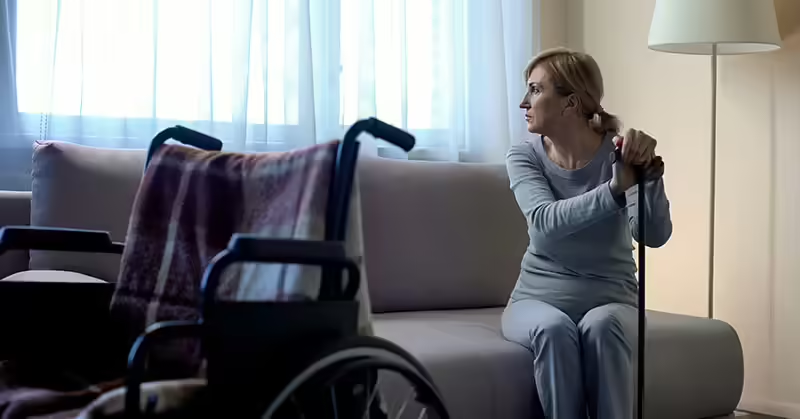The Other Victims of Injuries – Damages for Loss of Consortium
June 12, 2020

You may be aware that you can recover monetary damages for the loss of a loved one through a wrongful death lawsuit. However, most people are unaware that damages may be available to you, personally, if your loved one is seriously injured.
Loss of Consortium refers to damages for the intangible injuries that you suffer alongside your injured family member. The law recognizes the loving relationships and support that people provide to each other and how those relationships can be severely affected by the actions of a negligent party. As a prerequisite, damages for loss of consortium are available as a source of compensation only when your loved one has proven their negligence or other legal claim against the at-fault party. Loss of consortium is a “derivative claim,” meaning that it is attached or “strapped” to the injured party’s claims for the purpose of calculating damages.
What exactly is Loss of Consortium?
Loss of consortium can extend to multiple variants of familial relationships, but the primary familial interest recognized by Texas Courts is the marital relationship. “Consortium” refers to the affection, solace, comfort, companionship, society, assistance, and sexual relations necessary to a successful marriage. Consortium primarily consists of the emotional or intangible elements of the marital relationship and, in Texas, does not include the “services” rendered by a spouse to the marriage. In its origin, a claim for damages for loss of consortium arose from the negligent or intentional impairment of the relationship. This means that if one spouse suffers bodily harm due to the negligent or otherwise poor conduct of a third party, the spouse can be considered the “impaired spouse.” The other spouse can bring a cause of action for damages against the negligent third party as the “deprived spouse.” In modern cases, either spouse has a cause of action for all loss of consortium that may arise due to an injury caused to the other spouse by a third-party tortfeasor’s negligence.
The Texas Supreme Court has also extended loss of consortium rights to children when a third party causes serious, permanent, and disabling injuries to their parent.
Proving Loss of Consortium
Proving loss of consortium is unique. Unlike damages for physical injuries, there are few hard sources of evidence, like medical records, that can speak to the extent of your damages. However, the only available remedy for these types of damages is money … and although it won’t cure the pain you endure stemming from your spouse’s or parent’s injury, money is the only transferable “thing” available to you. Translating emotional pain and loss into a monetary figure that jurors can agree with can be tricky.
The best way to prove what you have endured in these types of cases is by you explaining it. Defense lawyers will often try to discredit witnesses and will look for ways to show a jury that you are not genuine. However, defense lawyers can experience extreme foot-in-mouth syndrome if you are prepared by your lawyers to testify genuinely. You need to show, above all, what has been lost. If you are the “deprived” family member suffering loss of consortium, your lawyers should aim to demonstrate the differences in your behavior and your life from before and after the plaintiff was injured. A jury can consider evidence that speaks to the following categories:
- the relationship between the injured family member and the deprived family member;
- the living arrangements of the family members;
- any extended absence of the injured family member from the deprived family member;
- the “harmony” of family relations; and
- the injured family member and deprived family members common interests and activities.
Examples of these types of evidence could include testimony or documented evidence about:
- the plaintiff and spouse traveling together
- the plaintiff and spouse attending social functions together
- the plaintiff and spouse engaging in various recreational activities
- the plaintiff and spouse saving money in anticipation of raising a family but the plaintiff could not work due to injuries
- the plaintiff being unable to give the spouse emotional support
- the plaintiff is no longer able to have sexual relations
- the plaintiff can no longer provide childcare
In addition, witness testimony that verifies the nature of the couple’s relationship or pictures depicting the couple’s lifestyle before the injury may assist the loss of consortium claim.
It is important to note that as a “derivative claim,” your claim for loss of consortium will be variable depending on the plaintiff’s claim. For instance, if a jury finds the plaintiff to be 20% at fault, then the plaintiff’s and your damages will be reduced by 20% from the jury’s monetary award. If the jury finds the plaintiff was 51% responsible for their injuries, then the plaintiff’s and your claim for loss of consortium are not viable.
If your spouse or parent was severely injured due to the negligence of a third party, speak to an experienced attorney at Morrow & Sheppard about your rights as a family member.
References
Whittlesey v. Miller, 572 S.W.2d 665, 667 (Tex. 1978).
Reagan v. Vaughn, 804 S.W.2d at 467 (Tex. 1990)
Roberts v. Williamson, 111 S.W.3d 113, 116–18 (Tex. 2003) (discussing Reagan and Whittlesey).
JBS Carriers, Inc. v. Washington, 513 S.W.3d 703, 717 (Tex. App.—San Antonio 2017, rev’d on other grounds); 564 S.W.3d 830 (Tex. 2018).
Thomas v. Uzoka, 290 S.W.3d 437, 455 (Tex. App.—Houston [14th Dist.] 2009, pet. denied).
Nick Morrow is a trial and personal injury lawyer who has been repeatedly designated as a Super Lawyer. Nick has recovered millions of dollars for deserving clients nationwide. He has handled a variety of business and all types of personal injury cases involving work-related negligence, including but not limited to oilfield injuries, maritime injuries, work injuries, and wrongful death. You can learn more about Nick here.
- Home
- |
- Personal Injury
- |
- The Other Victims of Injuries...
















































